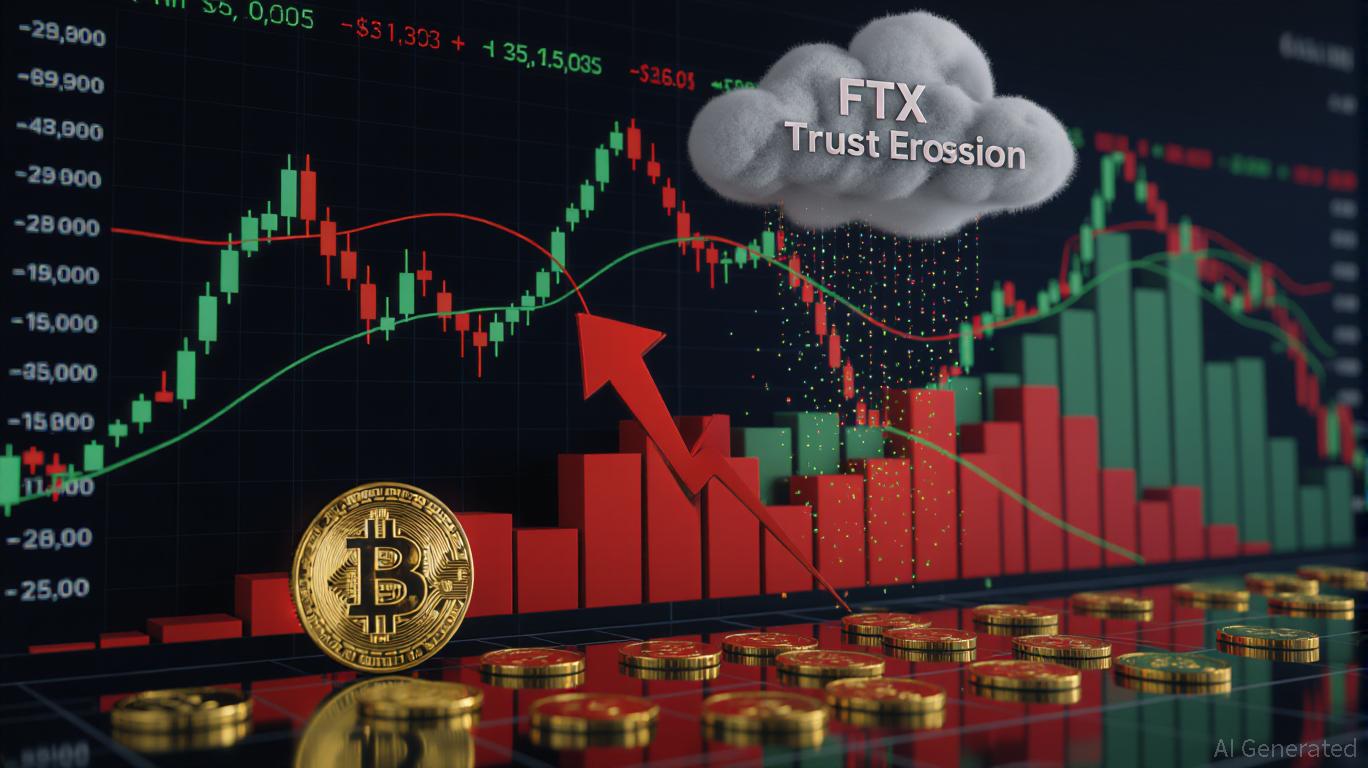The Unexpected Bitcoin Plunge in November 2025: Causes Behind the Drop and Future Prospects for Cryptocurrency Investors
- The November 2025 BTC crash resulted from Fed tightening, lingering FTX trust erosion, and institutional outflows. - Fed's hawkish liquidity controls and inflation focus created toxic conditions for Bitcoin's low-rate-dependent market. - FTX's unresolved $7.1B payouts and $20B institutional exodus since 2022 amplified panic selling through trust deficits. - Crypto investors must now wait for Fed policy clarity and prioritize transparent platforms with regulatory compliance.
The Fed’s Hawkish Posture: The Unseen Driver
In November 2025, the Federal Reserve’s moves, while not directly raising rates, indicated a preference for tighter policy that unsettled riskier assets.
Even though no rate increase was announced in November, the Fed’s emphasis on liquidity management and rate oversight sent a strong signal: monetary tightening was not over. For Bitcoin, which generally benefits from low interest rates, this hawkish approach created a challenging environment. As expectations of higher borrowing costs grew, risk aversion intensified, leading to a rapid sell-off in BTC.
FTX’s Lingering Trust Deficit: An Ongoing Burden
Three years after the FTX collapse, the crypto sector still faces a significant trust gap. Despite efforts to increase transparency and implement proof-of-reserves, FTX creditors have yet to be fully repaid.
The psychological scars from FTX’s downfall remain deep. Even as the market recovered, many institutions chose to withdraw from centralized exchanges altogether, moving assets to self-custody or converting to fiat.

Institutional Withdrawals: The Tipping Point
The November downturn was further intensified by a surge in institutional withdrawals. While precise data for 2025 is still being compiled, trends from 2022 show that declining trust and economic stress often prompt large-scale redemptions. With the Fed signaling more tightening and the FTX fallout unresolved, institutions began reducing their crypto holdings to safeguard assets. This move toward safety, combined with diminished liquidity post-FTX, triggered a downward spiral.
What Lies Ahead for Crypto Investors?
For those managing risk in crypto, moving forward will require both patience and vigilance. Consider these strategies for the next stage:
- Await Clear Signals from the Fed: The Federal Reserve’s meeting in December 2025 will be crucial.
Should the central bank indicate a pause in tightening, Bitcoin may find support. Investors should keep an eye on the repo facility’s performance and overall liquidity conditions.
- Monitor Efforts to Restore Trust: Platforms that consistently provide transparency—such as real-time proof-of-reserves audits—will become more attractive.
Steer clear of exchanges with unresolved financial obligations.
- Broaden Portfolio Exposure: Consider allocating funds to crypto assets with solid fundamentals and clear regulatory standing, like Bitcoin ETFs or high-quality stablecoins.
Conclusion
The Bitcoin crash in November 2025 was the result of both tightening global monetary policy and persistent structural weaknesses in crypto. While the Fed’s hawkish stance and the lingering effects of FTX were immediate triggers, the broader takeaway is that crypto markets are now deeply intertwined with global economic trends. For investors, the challenge is to balance hope with caution—waiting for a shift in Fed policy and for the crypto industry to rebuild its foundation of trust.
Disclaimer: The content of this article solely reflects the author's opinion and does not represent the platform in any capacity. This article is not intended to serve as a reference for making investment decisions.
You may also like
PENGU Token Price Rally and Technical Review: Evaluating Immediate Trends and Market Sentiment
- Pudgy Penguins (PENGU) token surged 12.8% amid Bitcoin's 4.3% rebound and $35.3B altcoin market cap growth, reigniting memecoin speculation. - Whale activity and $122.36M futures open interest suggest strategic accumulation, though stabilization raises breakout/pullback uncertainty. - 33% volume spike to $202M highlights short-term hype, but technical indicators show conflicting signals at key $0.016-$0.017 levels. - Investor sentiment remains divided between bullish retail optimism and bearish structura
International Paper's Shutdowns: Sign of Expansion or Indication of Financial Trouble?
- International Paper will close two U.S. packaging plants by 2026, impacting 218 employees, as part of cost-cutting amid weak demand. - The closures align with its $600M operational streamlining strategy, including the recent DS Smith acquisition to strengthen North American/European markets. - Financial risks escalate with Q3 2025 losses, -0.04% operating margin, and an Altman Z-Score of 1.47 signaling potential bankruptcy within two years. - Analysts remain divided: some highlight undervalued stock pote

ProverNet's ZK Marketplace Drives DeFi Expansion Through Scalable Verification
- Brevis launches ProverNet, a decentralized ZK proof marketplace using TODA auctions to scale blockchain verification. - Platform processes 250M+ proofs via zkVM execution and recursive aggregation, achieving 99.6% Ethereum block verification under 12 seconds. - BREV token enables staking, governance, and payments while partners like PancakeSwap and Linea leverage infrastructure for DeFi applications. - Entering a competitive ZK market with Proof Market and Prover Network, ProverNet targets DEX hooks and

Brazil Narrows Crypto Tax Loopholes to Meet International Norms
- Brazil plans to tax crypto cross-border payments under IOF, aligning with OECD's CARF framework to close regulatory gaps. - The move targets stablecoins like USDT , addressing forex risks and preventing money laundering through stricter data sharing. - With 20% YoY growth in crypto transactions ($42.8B H1 2025), the tax aims to boost revenue amid fiscal challenges. - Global CARF adoption by US, EU, and UAE highlights coordinated efforts to combat crypto tax evasion and regulatory arbitrage. - Brazil's ce
